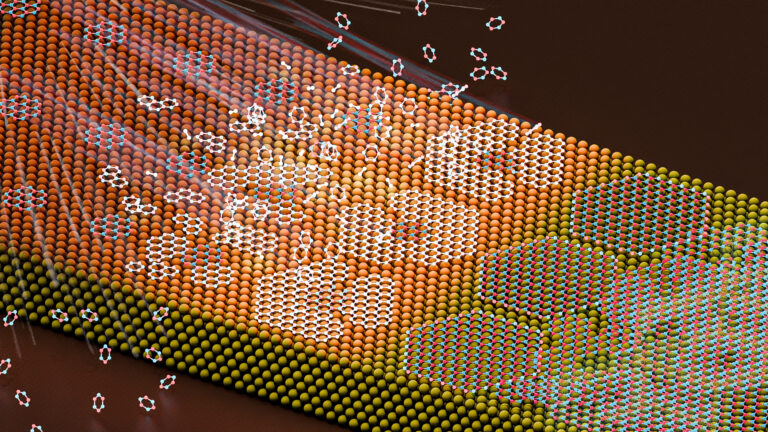Material Science and Engineering
Electronic skin has a strong future stretching ahead
Soft, stretchy, slimline and strong electronics could accelerate the arrival of artificial skin.

A material that mimics human skin in strength, stretchability and sensitivity could be used to collect biological data in real time. Electronic skin, or e-skin, may play an important role in next-generation prosthetics, personalized medicine, soft robotics and artificial intelligence.
“The ideal e-skin will mimic the many natural functions of human skin, such as sensing temperature and touch, accurately and in real time,” says KAUST postdoc Yichen Cai. However, making suitably flexible electronics that can perform such delicate tasks while also enduring the bumps and scrapes of everyday life is challenging, and each material involved must be carefully engineered.
Most e-skins are made by layering an active nanomaterial (the sensor) on a stretchy surface that attaches to human skin. However, the connection between these layers is often too weak, which reduces the durability and sensitivity of the material; alternatively, if it is too strong, flexibility becomes limited, making it more likely to crack and break the circuit.

A durable e-skin developed at KAUST using a hydrogel reinforced with silica nanoparticles forms a strong and stretchy substrate.
© 2020 KAUST
“The landscape of skin electronics keeps shifting at a spectacular pace,” says Cai. “The emergence of 2D sensors has accelerated efforts to integrate these atomically thin, mechanically strong materials into functional, durable artificial skins.”
A team led by Cai and colleague Jie Shen has now created a durable e-skin using a hydrogel reinforced with silica nanoparticles as a strong and stretchy substrate and a 2D titanium carbide MXene as the sensing layer, bound together with highly conductive nanowires.
“Hydrogels are more than 70 percent water, making them very compatible with human skin tissues,” explains Shen. By prestretching the hydrogel in all directions, applying a layer of nanowires, and then carefully controlling its release, the researchers created conductive pathways to the sensor layer that remained intact even when the material was stretched to 28 times its original size.
Their prototype e-skin could sense objects from 20 centimeters away, respond to stimuli in less than one tenth of a second, and when used as a pressure sensor, could distinguish handwriting written upon it. It continued to work well after 5,000 deformations, recovering in about a quarter of a second each time. “It is a striking achievement for an e-skin to maintain toughness after repeated use,” says Shen, “which mimics the elasticity and rapid recovery of human skin.”
This type of e-skin could monitor a range of biological information, such as changes in blood pressure, which can be detected from vibrations in the arteries, and movements of large limbs and joints. This data can then be shared and stored on the cloud via Wi-Fi.
“One remaining obstacle to the widespread use of e-skins lies in scaling up of high-resolution sensors,” adds group leader Vincent Tung; “however, laser-assisted additive manufacturing offers new promise.”
“We envisage a future for this technology beyond biology,” adds Cai. “Stretchable sensor tape could one day monitor the structural health of inanimate objects, such as furniture and aircraft.”
References
- Cai, Y., Shen, J., Yang, C., Wan, Y., Tang, H., Aljarb, A.A., Chen, C., Shao, Y., Han, Y., Jonas, S.J., Dong, X. & Tung, V. Multifunctional electronic skin sensors with ultrabroad working range. Science Advances 6, 48 (2020) | article
You might also like

Material Science and Engineering
Electron movie guides design of layered perovskite materials

Material Science and Engineering
Remote region sensor for essential vitamin deficiency

Material Science and Engineering
Low-power hydrogen sensor detects leaks in an instant

Material Science and Engineering
Illuminating pathways to long-lived organic solar cells

Chemistry
Beating the dark current for safer X-ray imaging

Chemical Engineering
Net benefits for advanced materials design

Material Science and Engineering
Atom-thin insulator grown into perfect films

Material Science and Engineering




